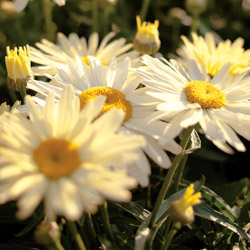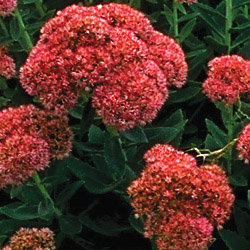Tulip Time
It’s finally here, that time of year that we’ve all been anticipating – fall! And, you know what fall means? Tulip time!
The cooler days of fall entice us back into the garden that the August heat forced us to abandon. This is when your local Master Nursery® Garden Center is brimming with fresh, new, seasonal plant material and overflowing with fall-planted, spring-flowering bulbs. And, we wish to point out, that no bulb type is more treasured than the tulip. With an almost limitless selection (100 species and over 3000 varieties divided into 15 distinct groups), you’ll never tire of the tulip.
Tips for Planting Tulips
Tulips are an easy-care addition to any garden or landscape, and they are simpler to plant than many gardeners realize. Tulips need cold winters to stimulate blooms. They flower effortlessly and, in most cases, return for many years in USDA Hardiness Zones 3 – 7. Tulips may be grown in Zones 8 – 11 with a pre-chilling period of 10-14 weeks at 35 to 45°F. In these warmer climates, tulips are treated as annuals.
Tulip 10 Step
- Choose only top-sized, firm bulbs without bruises or obvious damage. Bigger bulbs generally indicate better quality and will provide more and larger flowers.
- Bulbs should be planted as soon as purchased, otherwise store them in a cool, dry location until ready to plant. Plant tulip bulbs before the ground freezes. When planting in Zones 8 – 11, store bulbs at 35 to 45°F until planting time.
- Choose a full or part sun location to plant tulips. A semi-shady location provides some relief from the heat in Zones 8 – 11.
- If planting a large number of bulbs, consider digging a free-form bed or trench in which to plant. Individual holes are appropriate when planting a small number of tulips.
- Planting beds and holes should be well-draining and the soil enriched with plenty of Master Nursery® Bumper Crop® Soil Builder [Eastern & Midwestern Regions | Western Region].
- Plant tulips at the depth of three times the height of the bulb, approximately 6 inches deep.
- Always plant pointed end up.
- Apply a generous amount of bone meal at planting time.
- Backfill with the excavated, amended soil.
- Water the planting area thoroughly and mulch generously after planting tulip bulbs.
Tried & True Tulip Selections
Some tulips can be a little finicky, and while these may disappear from your garden after a year or two, other selections promise trouble-free blooms for years to come if planted and cared for correctly. Proper bulb planting starts with amending your soil with Master Nursery® Bumper Crop® Soil Builder [Eastern & Midwestern Regions | Western Region] to ensure a healthy and nutritious planting environment with excellent drainage.
Species Tulips
Species Tulips are by far the longest-lived tulips and will even naturalize when given advantageous growing conditions. Small in stature, species tulips are an excellent choice for rock gardens and for planting in the front of beds and borders.
Darwin Hybrids
Darwin Hybrids perennialize quite well and are valued for their long-stemmed and large brightly colored flowers available in a wide range of hues. These mid-season bloomers make excellent cut flowers.
Emperor Tulips
Emperors are also good perennializing tulips. These modern hybrids are known for their substantial, elongated blooms borne on tall stems. Some even boast decoratively patterned and mottled foliage.
The temps are cooler, the garden is waiting, and your local Master Nursery® Garden Center is ready for you. So, what are you waiting for? Take advantage of tulip time and prepare for a bright and floriferous spring!
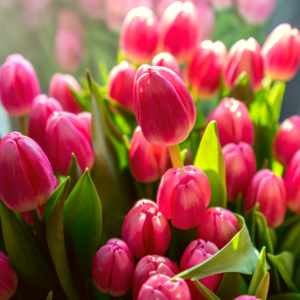

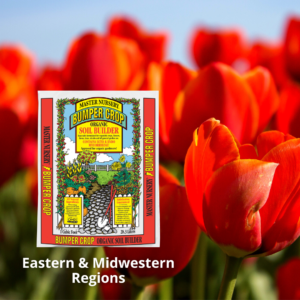
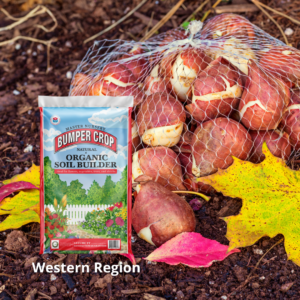
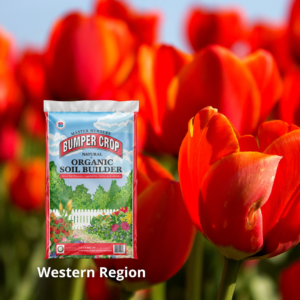

Ornamental Cabbage & Kale
Looking to add extra appeal to the fall and winter landscape? This year, try ornamental cabbage and kale! Planted alongside chrysanthemums and winter pansies, ornamental cabbage and kale add distinctive bold texture and vibrant seasonal color to the late-season landscape.
Foliage Not Flower
Frequently called ‘flowering’ cabbage & kale, these fall favorites are not flowers at all, but large, dense rosettes of colorful, frilly foliage richly variegated with cream, white, green, pink, rose, and purple – the perfect fall palette.
- Kale leaves are frilly-edged and sometimes deeply cut or lobed.
- Cabbage leaves tend to have a smoother appearance with a wavy leaf edge.
While the typical large ornamental cabbage and kale varieties are readily available at this time of year, you can also try more unusual options, including dwarf varieties suitable for planters, and upright, tall, long-stemmed varieties that are useful in fall floral arrangements.
Unlike most other fall ornamentals, these cold-tolerant annuals improve in appearance after a frost or two, bringing out more intense and brilliant colors in their foliage – perfect for use as both an autumn accent plant mixed with other fall favorites or as a specimen plant, commanding all the attention. Initially select your ornamental cabbage and kale for the leaf texture as the true leaf color will not be recognized until after temperatures have cooled down quite a bit.
Our favorite tried and true varieties include:
Cabbages
- Color Up
Grows upright with green leaves surrounding a center of white, pink, or magenta.
- Osaka Cabbage
A compact plant with large, smooth, wavy leaves boasting a center of white, pink, or jewel-toned purple.
Kales
- Crane
When grown close together, Crane is a tall variety, perfect for cutting and using in floral arrangements
- Peacock
This extra fancy variety sports deeply cut, frilly, loose leaves in purple, magenta, and white.
Planting
Popular in fall borders, grouped in planting drifts, or planted in containers for the deck or patio, ornamental cabbage and kale typically grow to 12-18” high and wide, depending on the cultivar. Plant these fall jewels in September and early October, at least 12” apart, depending on the variety, in an area with full sun that has rich, moist, well-drained soil.
- In Ground
If planting in the ground, add a shovel full of Master Nursery® Bumper Crop® Soil Builder [Eastern & Midwestern Regions | Western Region] to each planting hole to enrich the native soil. Also, sprinkle in a small handful of Master Nursery® Bumper Crop® All Purpose Food to help your plants thrive through the fall, winter, and into spring.
- In Containers
When planting in pots, planters, urns, and window boxes, it is best to plant using lightweight, nutritious potting soil. Of course, we recommend Master Nursery® Bumper Crop® Potting Soil [Eastern & Midwestern Regions | Western Region] along with a sprinkling of Master Nursery® Bumper Crop® All Purpose Food for happy, healthy plants all season long.
Cabbage and Kale Tip
While these plants are quite similar to the cabbage and kale cooked in the kitchen and consumed in salads, soups, and stews, it is important to note that ornamental varieties are cultivated for color and shape rather than taste. If you’d like to use them in the kitchen, use them as a garnish only. They are more attractive than tasty, and their proper place is in the garden.
Enjoy your ornamental cabbage and kale during the cold months of the year as once they begin to bolt in the spring, sending up their flower stalks, it is time to pull them up and replace them with late spring and summer flowering annuals. This fall, however, try several new varieties planted in both containers and directly into the garden. You’ll love the long-lasting color that they’ll bring to your surroundings.
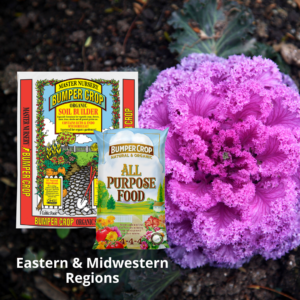

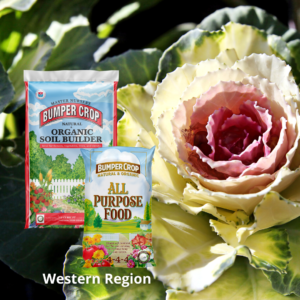

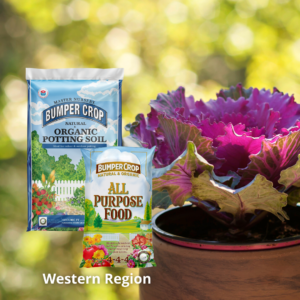
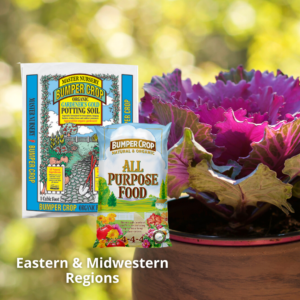

Growing Agave
Native to the Americas, dramatic Agave is the perfect companion for the California landscape. Along with its striking leaves and architectural form, Agave is astonishingly drought tolerant and fire-resistant, important qualities for west coast landscape plants.
About Agave
Although leaf shape and color may vary, Agave leaves always radiate from a central point in a symmetrical rosette. The leaves are succulent and, most often, pointy at the tip. Some varieties have smooth leaves while others possess leaves with teethed margins. Leaf color can range from deep green to bluish green to silvery blue to gray. Some varieties offer variegated leaves with yellow or white lines or edges. Agave is also available in a wide-ranging assortment of sizes from impressively enormous to dainty and small.
Grown primarily for its distinguished appearance, Agave does flower. The flower stalks tend to be imposing compared to the overall size of the plant, and it may take years, even decades, for an Agave to bloom. Flowers may be branched, similar to a tree, or unbranched. The flowers will form seed pods or bulbils, necessary for reproducing the plants. Once an Agave flowers, the main plant will die. But the plant leaves behind clones for propagating new Agaves. You may prevent Agave from flowering by cutting off the flower stalk as it begins to form. Agave flowers are an important source of nectar for pollinators such as hummingbirds and bees.
Growing Agave
Whether grown as a specimen or grouped in drifts in the landscape, Agave requires a full sun site – direct sun – and prefers a low humidity environment. Poor soil is not a problem, and Agave can tolerate nutrient deficient soil quite well once established. Give your Agave a good start by amending the native soil with Bumper Crop® Natural & Organic Soil Conditioner. This will help increase drainage, as sharp drainage is essential. Adding gravel or chicken grit to the planting area is also helpful. Fertilize lightly with Bumper Crop® Natural & Organic Starter Food. Although succulent, and therefore drought tolerant, watering of Agave is infrequent but occasionally necessary, more so for potted plants than those in the ground.
Types of Agaves
With Agave, there seems to be an unlimited selection of colors, shapes, forms, and sizes. Stop by your local Master Nursery® Garden Center to sample their offerings.
With so very many Agaves to choose from, it is hard to select our favorite varieties. But here we go…
- American Century Agave
Its large size, 6 to 12 feet high, and narrow, long, wavy leaves make this an irresistible Agave for the west coast landscape. With desirable blue-green foliage, this Agave is exceptionally winter hardy to the low teens.
- Blue Agave
Blue Agave is where tequila comes from. As the name implies, this Agave has beautiful blue foliage, and it can grow an impressive 8 feet high by 8 feet wide.
- Mountain Agave
This lovely, apple-green agave with reddish-brown teeth grows up to 4 feet tall and 5 feet wide. Mountain Agave prefers full sun but will tolerate a part shade location and will grow best in soil that is well-drained, rich in organic matter, and regularly irrigated.
- Queen Victoria Agave
A most beloved dark-green, toothless Agave of manageable size, about 18 inches in diameter. The leaves sport attractive white markings on their sides and have a spike at their tip.
- Fox Tail Agave
A lovely, slow-growing Agave that will eventually grow to 4 feet high and looks like a blossoming flower with graceful, undulating, silvery-green leaves. The leaves have no teeth or terminal spine, making this Agave a dream to plant and care for. This Agave will tolerate moist or dry, well-drained soil.
Astonishing, dramatic, colorful, easy-care Agave will make a spectacular statement in your dry west coast garden. Have fun experimenting with new and exciting varieties.

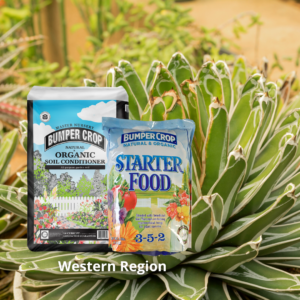


Colorful Winter Pansies
Don’t let their subtle size fool you; winter pansies are tough, cool-weather plants that bloom for six or more consecutive months, from the beginning of fall until the end of spring, adding much-needed color to an otherwise stark winter landscape.
Places to Plant
Pansies bloom in an array of colors to suit every taste. Often the petals are multi-colored with curious splotches, blotches, and markings that add a touch of whimsicality to the garden.
Versatile pansy blossoms may be used to brighten most areas of the winter garden. Adding a graceful drift of lively pansies to the front of an often-viewed bed or border will reinvigorate the winter landscape. Plant pansies under a tree, along a fence or pathway, and atop a stone wall to bring the dainty yet unusual flowers closer to the eye. Try tucking pansy plants into garden beds around spent perennials and shrubs. They are sure to brighten up a lackluster section of the garden landscape. Plant pansies anywhere that you will have occasion to enjoy their beauty and color all through the coldest months of the year.
Guess what? Winter pansies perform well in containers too! Mix them with dwarf shrubs or semi-evergreen perennials in planters placed on a deck, patio, or next to the front door to greet your guests with their array of welcoming hues. Or you may simply stuff a window box or hanging basket full of pansies to create an explosion of color.
Pretty Pansies
There is little difference between the pansies labeled as “winter” pansies and those labeled “spring” pansies. Pansy varieties sold in the autumn, however, are bred to be the most cold-tolerant and should be planted early in the fall to give them time to establish strong roots and shoots before a hard frost hits. When fall-planted, pansy plants are larger, more robust, and floriferous come spring than those planted in the springtime.
There are numerous varieties of gorgeous winter pansies available in the fall; some popular ones are:
- Matrix Series
This series of winter pansies come in an assortment of colors that range from solid- to multi-colored, and from no markings to pretty little faces on heart-shaped petals. These plants have excellent branching, able to support an abundance of blooms.
- Cool Wave Pansies
Super cold hardy, Cool Wave Pansies produce an abundance of colorful, medium-sized blooms on a vigorous spreading plant, making them the perfect choice for filling hanging baskets and planters or as a ground cover.
- Clear Mix Panola
Panola pansies are a cross between a pansy and violas, giving this series excellent cold hardiness, large flowers, and a high bloom count. These prolific bloomers are perfect for decorating beds, borders, and containers.
Practical Pansy Planting
Did you know that winter pansies, as with most annuals and perennials, perform their best if planted in soil that is rich in high-quality compost and fed with a well-balanced fertilizer that will promote blossoms?
- Ground Planting
In the fall, choose a well-drained planting location in full sun, part sun, or part shade. Work in 4-6 inches of Master Nursery® Bumper Crop® Soil Builder [Eastern & Midwestern Regions | Western Region]. Plant pansies at the same level, or slightly higher, than they were growing in their market packs, taking care not to plant too deep or the plants may rot. Place plants about 4 – 6 inches apart. Apply Master Nursery® Bumper Crop® Rose and Flower Food after planting, mulch, and water the bed thoroughly. Remember to check the plants often during the first three weeks after planting, or until new growth begins, to ensure adequate moisture necessary for healthy development.
- Container Planting
When planting winter pansies in containers, the instructions are the same as when planting directly into the ground, except, it is better to use Master Nursery® Bumper Crop® Potting Soil [Eastern & Midwestern Regions | Western Region]. This lightweight, rich potting soil, loaded with compost, is the perfect soil for all container-grown plants. The soil in containers tends to dry out more quickly than soil in the ground. It is important to pay attention to container soil moisture levels in the fall as the winter pansies work to produce strong roots to sustain them through the cold months.
Pansy Maintenance
Minimal maintenance is necessary for winter pansies to reach their full potential.
Deadheading, removing spent blooms, is helpful as it stimulates the plant to produce abundant blossoms. Clipping out any dried foliage will keep pansy plants looking their best.
Whether scattered amongst the seasonal chrysanthemums and ornamental cabbage & kale or tucked into window boxes and containers, easy-care winter pansies add color and whimsy to the late-season landscape straight through to spring.


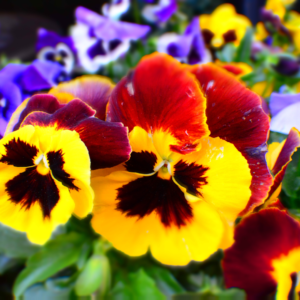


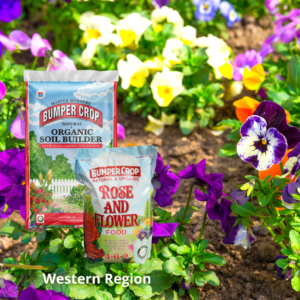
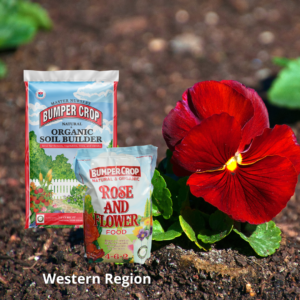
Audition Some Autumn Bloomers
Extend the beauty of your garden with vivid autumn-blooming perennials. When you think of fall-blooming plants, don’t stop at mums – there are many perennials that can add color to your yard at this time of year.
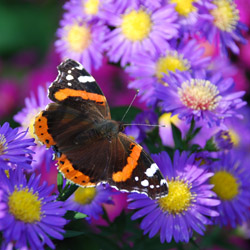
Top Autumn Bloomers
While there are different autumn-blooming perennials for different growing zones and climate conditions, some of the most popular and widespread options include…
- Fall Daisies
For fall daisies (besides daisy mums!) grow Boltonia or Nippon Daisy. Boltonia is a tall (3-4′) grower, suitable as a background plant. White or pink daisies are borne in profusion atop fine grey-green foliage. The Nippon Daisy (Chrysanthemum nipponicum) is covered with large crisp white daisies in October. Both love lots of sun and make excellent cut flowers. - Autumn Sedums
Bold-foliaged sedums provide texture as well as color in a sunny place. Sedum ‘Autumn Joy’ is the most well known. It has coppery-pink flower heads. Sedums ‘Brilliant’ and ‘Stardust’, with soft pink and white flowers respectively, are also attractive. For a totally different color combination plant sedum ‘Vera Jameson’. It has gray-purple foliage with rose pink blooms and looks stunning when planted with Blue Fescue, Artemesia Silver Mound and other silver-foliaged plants. As an added bonus, all the sedums are attractive to butterflies. - Autumn Asters
Asters are another fall bloomer that butterflies love. These perennials like sun and moist, well-drained soil. There are many colorful aster varieties in shades of pink, purple, blue and white. Some favorites include tall-growing aster ‘Alma Potschke’ with bright pink flowers, blue-flowered aster ‘Professor Kippenburg’ and low-growing aster ‘Purple Dome’ with its deep purple blooms. - Autumn Goldenrod
Sunny yellow goldenrod (Solidago) is another bright addition to the fall garden. Wrongly blamed as the cause of fall allergy problems, goldenrod has rightly taken its place in the fall garden. It looks particularly effective combined with blue flowering plumbago, purple asters and ornamental grasses.
Fall Bloomers for Shade Gardens
Even shade gardeners can enjoy late blooming perennials. Tall growing Japanese Anemones are a stately addition to the perennial garden. Bloom colors range from pure white to various shades of pink, and flowers can be single, semi-double or double blooms. Anemones grow well in light to moderate shade and spread quickly to form large clumps, filling in space vacated by spent summer plants. Turtlehead (Chelone) is another fast spreader for shade. Rose pink flowers cover the tops of the plant from early September to October. For a deeply shaded location, try Toad Lily (Tricyrtis), which has clusters of beautiful cream flowers, spotted with maroon along its upright stems. For light shade, plant Blue Cardinal Flower (Lobelia siphilitica), whose intense blue spikes can be admired from mid-August until frost.
No matter what type of garden you have, the end of summer does not need to mean the end of colorful blooms. Instead, just opt for amazing fall bloomers and enjoy brilliant color even longer!
